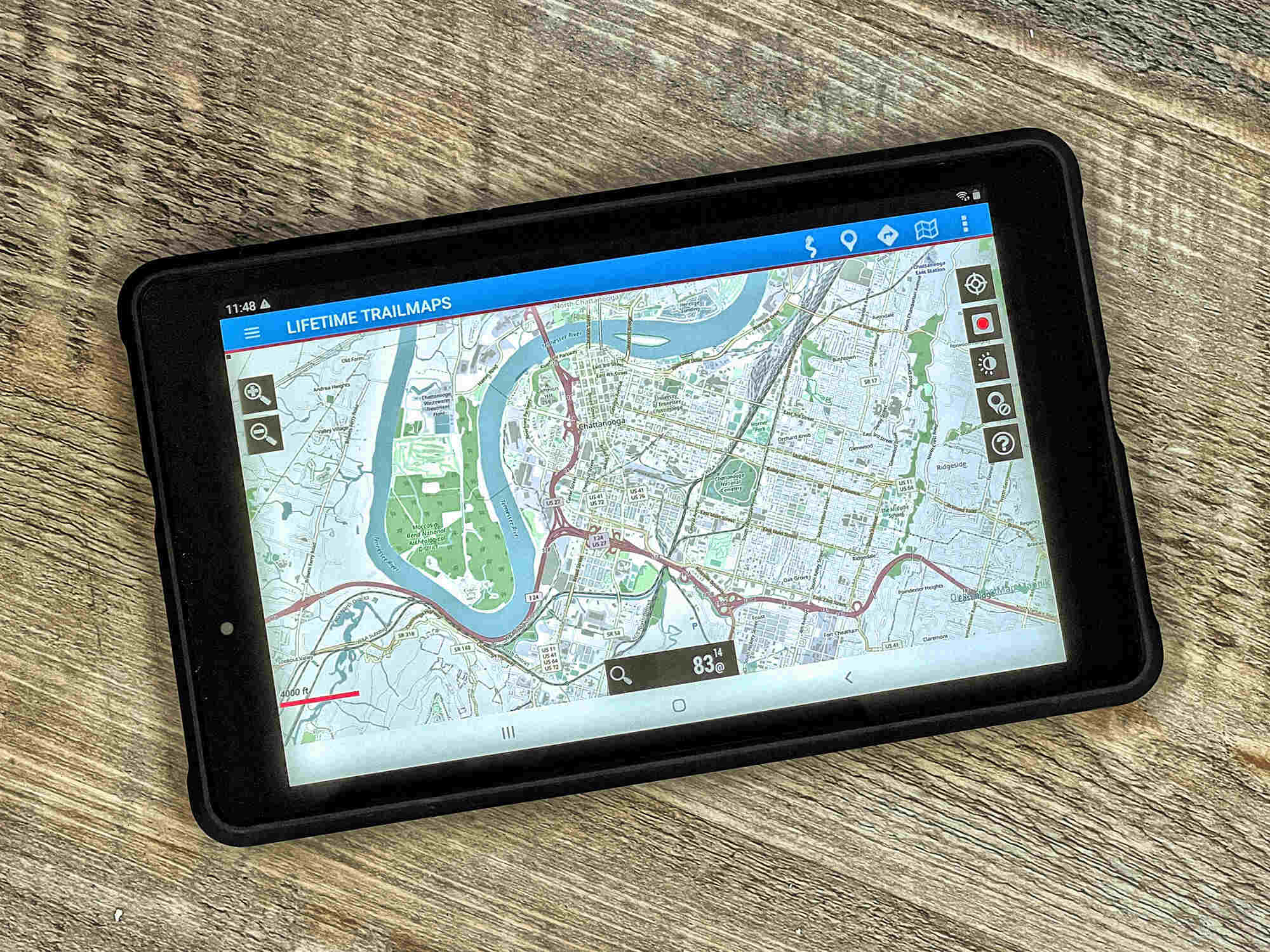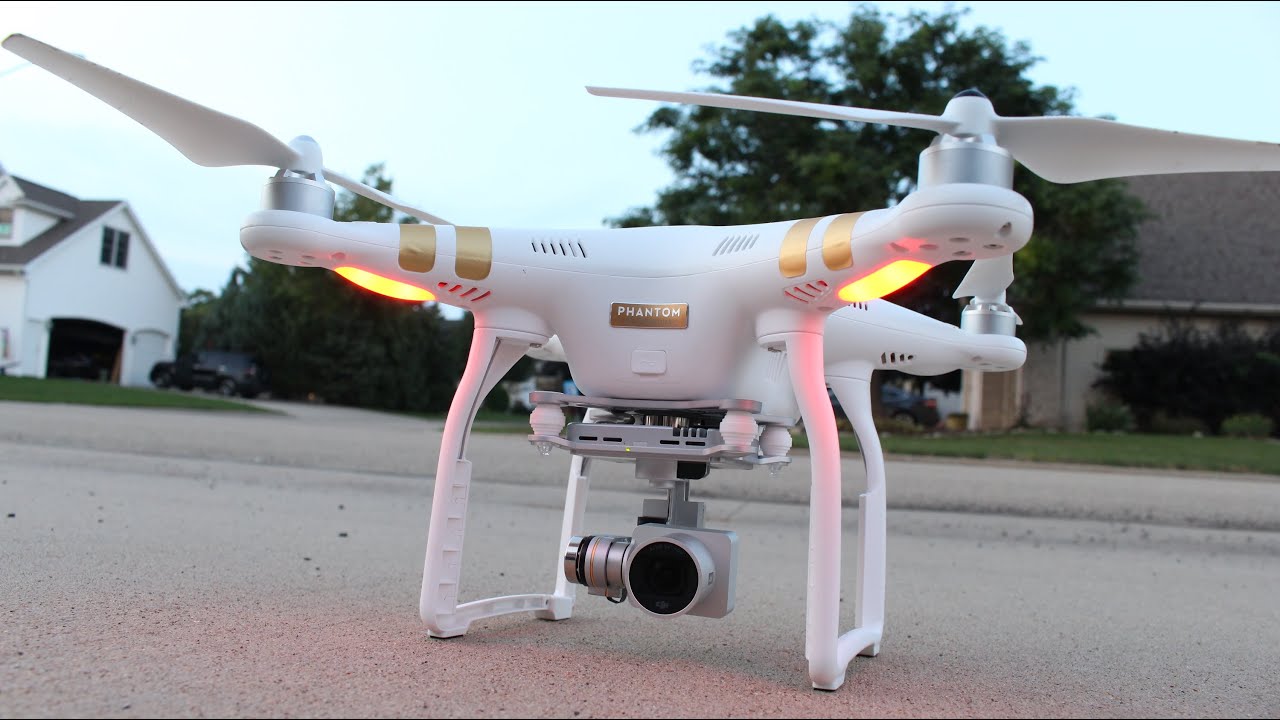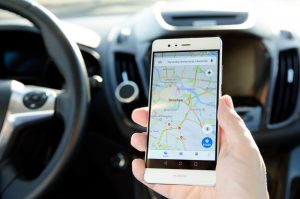Introduction
A tablet is a versatile electronic device that offers a wide range of functionalities, including internet browsing, entertainment, and productivity. One of the features that enhance the usability of a tablet is its built-in GPS capability. GPS, which stands for Global Positioning System, allows tablets to accurately determine their location, making them valuable tools for navigation, geolocation-based apps, and tracking.
In this article, we will explore the importance of GPS in tablets and how you can determine if your tablet has this feature. Whether you are an avid traveler, an outdoor enthusiast, or someone who relies on navigation apps, knowing if your tablet has GPS is essential.
GPS technology works by utilizing signals from a network of satellites to calculate a device’s precise location. This information is then used by various apps and services to offer maps, directions, real-time tracking, and other location-based features.
So why do tablets have GPS capabilities? Tablets are designed to be portable, lightweight devices that can be taken anywhere, making them ideal companions for travelers and adventurers. Having a built-in GPS allows users to navigate unfamiliar territories, find points of interest, and track their routes without the need for an external GPS device or a constant internet connection.
Tablets with GPS capabilities are also valuable tools for outdoor activities such as hiking, camping, and biking. GPS-enabled tablets can provide real-time location information, elevation data, and trail maps, offering a safer and more enjoyable outdoor experience.
Now that we understand the significance of GPS in tablets, let’s delve into the various ways you can check if your tablet has this feature. Being aware of your tablet’s GPS capabilities will empower you to make the most out of its location-based functionalities and enhance your overall user experience.
What is GPS?
GPS, which stands for Global Positioning System, is a technology that uses a network of satellites and receivers to determine the precise location of a device on Earth. Developed and maintained by the United States government, GPS is widely used for navigation, mapping, and location-based services.
The GPS system consists of three main components: satellites, ground control stations, and user receivers. There are currently over 30 GPS satellites orbiting the Earth, constantly transmitting signals that can be picked up by GPS receivers. These receivers, found in devices like smartphones, tablets, and GPS units, interpret the satellite signals to calculate the device’s exact location, speed, and altitude.
The GPS technology relies on a process called trilateration. By receiving signals from multiple satellites, the GPS receiver can determine the distances between itself and each satellite. Using this information, the receiver then calculates its precise position by intersecting the spheres around each satellite. The result is an accurate three-dimensional location fix.
GPS is widely used in various industries and applications. In addition to personal navigation devices and tablets, GPS is implemented in car navigation systems, aviation and marine navigation systems, asset tracking systems, and even in agricultural applications.
One of the key features of GPS is its ability to provide real-time positioning information. This means that GPS devices can continuously update their location as they move, allowing users to accurately track their progress and navigate to a desired destination. Additionally, the advent of GPS-enabled smartphones and tablets has opened up a wide range of possibilities for location-based apps and services. From finding nearby restaurants and attractions to tracking fitness activities, GPS has become an indispensable tool in our everyday lives.
In summary, GPS is a satellite-based navigation system that allows devices like tablets to determine their precise location on Earth. By utilizing signals from multiple satellites and performing complex calculations, GPS receivers can provide accurate positioning information in real-time. The widespread use of GPS has revolutionized navigation and location-based services, making it an essential technology in today’s digital world.
Why do tablets have GPS?
Tablets are designed to be versatile devices that offer a wide range of functionalities to meet the needs of modern consumers. One of the features that have become increasingly common in tablets is GPS, which stands for Global Positioning System. But why do tablets have GPS capabilities? Let’s explore the reasons behind this.
1. Navigation: Tablets with GPS capabilities serve as portable navigation devices. Whether you’re driving in your car or walking through a busy city, having GPS on your tablet allows you to access accurate maps, get turn-by-turn directions, and find points of interest. This is particularly useful for travelers, commuters, and those who are exploring new places.
2. Fitness and Outdoor Activities: GPS-enabled tablets are a boon for fitness enthusiasts and outdoor adventurers. Whether you’re running, cycling, hiking, or engaging in other outdoor activities, having GPS on your tablet allows you to track your route, distance, speed, and elevation. It also enables you to discover new trails, record your workouts, and set goals. This makes tablets an excellent companion for those who want to stay active and explore the great outdoors.
3. Location-based Apps and Services: GPS on tablets opens up a world of possibilities when it comes to location-based apps and services. From finding nearby restaurants, hotels, and attractions to accessing weather forecasts, GPS-enabled tablets offer enhanced functionality and convenience. You can also use GPS for geotagging photos, checking into locations on social media, and participating in location-based games.
4. Emergency Situations: In emergency situations, having GPS on your tablet can be a critical lifeline. With GPS, emergency services can accurately locate you in case of an accident, natural disaster, or other emergencies. This enables a quicker response time and can potentially save lives.
5. Improved User Experience: By integrating GPS into tablets, manufacturers aim to enhance the overall user experience. GPS-enabled tablets provide a seamless and intuitive navigation experience, allowing users to effortlessly find their way around, explore new places, and stay connected with the world.
In summary, tablets have GPS capabilities to cater to the needs of users who require navigation, fitness tracking, access to location-based apps, and enhanced emergency services. The inclusion of GPS in tablets enhances the functionality, usability, and overall user experience, making them versatile devices that can be used in various scenarios and activities.
Ways to check if your tablet has GPS
If you’re unsure whether your tablet has GPS capabilities, don’t worry! There are several ways to check if your tablet has GPS. Here are a few methods you can try:
1. Checking the device specifications: Start by looking up your tablet’s specifications. You can find this information on the manufacturer’s website, in the user manual, or by doing a quick internet search. Look for terms like “GPS,” “Location Services,” or “GNSS” (Global Navigation Satellite System) in the specifications. If your tablet has GPS, it should be listed there.
2. Using location-aware apps: Install a location-aware app, such as Google Maps or a fitness tracking app, on your tablet. Open the app and see if it can accurately determine your location. If the app is able to pinpoint your location on the map, it is a good indication that your tablet has GPS capabilities.
3. Looking for GPS settings: Check your tablet’s settings menu for any GPS-related options. The location settings may vary depending on the operating system (e.g., Android, iOS, Windows). Look for a “Location” or “Privacy” section in the settings menu and see if there is an option to enable or disable GPS. If you find such an option, it means your tablet has GPS capabilities.
4. Checking with the manufacturer: As a last resort, you can reach out to the manufacturer of your tablet. Visit their official website or contact their customer support to inquire about the GPS capabilities of your specific tablet model. They should be able to provide you with accurate information about whether your tablet has GPS or not.
Remember, not all tablets have built-in GPS. Some tablets may rely on other location technologies like Wi-Fi positioning or cellular network positioning. While these methods can provide approximate location information, they may not be as accurate as GPS. If precise location accuracy is important to you, it’s best to ensure that your tablet has GPS capabilities.
By using the methods mentioned above, you can determine if your tablet has GPS and take full advantage of location-based features and services available on your device. Whether you want to navigate to new places, track your fitness activities, or utilize location-based apps, having GPS on your tablet can greatly enhance your user experience.
Checking the device specifications
One of the easiest ways to determine if your tablet has GPS capabilities is by checking the device specifications. The specifications provide detailed information about the hardware and features of your tablet. Here’s how you can check the device specifications:
1. Manufacturer’s website: Visit the official website of the tablet manufacturer. Look for the support or product page that corresponds to your tablet model. On this page, you should be able to find the specifications, usually listed under a tab or section titled “Specifications” or “Tech Specs.” Look for any mention of GPS or location services in the specifications. If the tablet has GPS capabilities, it should be clearly mentioned.
2. User manual: If you still have the user manual that came with your tablet, check the table of contents or index for any reference to GPS. Look for a section on the tablet’s features or specifications. This section should provide information about whether or not your tablet has GPS capabilities.
3. Online search: If you can’t find the manufacturer’s website or don’t have the user manual, you can perform an online search using your tablet’s model name or number along with the term “specifications.” This should bring up several results from websites that provide detailed specifications for various electronic devices. Look for the relevant information about GPS in these search results.
When checking the device specifications, keep in mind that different manufacturers may use different terminology to describe GPS capabilities. Look for terms such as “GPS,” “GNSS” (Global Navigation Satellite System), “A-GPS” (Assisted GPS), or “GLONASS” (Global Navigation Satellite System). These terms indicate that your tablet has GPS functionality.
If you find that your tablet does have GPS capabilities in the specifications, you can proceed to use location-based apps, enable GPS settings, and enjoy the benefits of GPS on your tablet. However, if the device specifications do not mention GPS, it is likely that your tablet does not have this feature.
Remember to double-check the accuracy and validity of the information provided in the specifications by cross-referencing multiple sources. Additionally, if you are still unsure about your tablet’s GPS capabilities, you can reach out to the manufacturer’s customer support for clarification.
Checking the device specifications is an effective way to quickly determine if your tablet has built-in GPS. By understanding your tablet’s capabilities, you can make informed decisions about using location-based services and exploring the features that rely on GPS functionality.
Using location-aware apps
If you want to confirm whether your tablet has GPS capabilities, one of the most practical methods is to use location-aware apps. These apps utilize the tablet’s GPS functionality to provide accurate location information. Here’s how you can use location-aware apps to check if your tablet has GPS:
1. Install a location-aware app: Start by downloading and installing a popular location-aware app like Google Maps, Waze, or a fitness tracking app such as Strava or Nike Run Club. These apps are designed to utilize the GPS capabilities of your tablet to provide accurate location-based services.
2. Open the app and grant necessary permissions: Launch the location-aware app on your tablet. If this is your first time using the app, you will likely be prompted to grant permissions such as access to your device’s location. Make sure to allow these permissions, as they are necessary for the app to access the GPS functionality.
3. Check for accurate location information: Once you have opened the app and granted the necessary permissions, observe the information displayed on the app’s interface. If your tablet has GPS, the app should be able to accurately determine your location. This can be confirmed by viewing your current location on the map or by checking if the app provides real-time directions or tracking features.
4. Observe functionality and accuracy: Pay attention to how the app behaves when you move around. If the location marker on the map moves along with you, it indicates that the app is utilizing the tablet’s GPS capabilities to track your movement accurately. If the app’s location information seems reliable and aligns with your actual location, it is a strong indicator that your tablet has GPS functionality.
If the location-aware app fails to provide accurate location information or doesn’t seem to utilize GPS, it is possible that your tablet does not have GPS capabilities. However, keep in mind that some apps may rely on alternative location technologies such as Wi-Fi positioning or cell tower triangulation, which may not provide the same level of accuracy as GPS. Therefore, it’s always best to use an app specifically designed for GPS functionality to ensure accurate results.
Using location-aware apps is an effective and practical method to check if your tablet has GPS capabilities. By testing the functionality and accuracy of these apps, you can determine if your tablet is equipped with GPS and explore the wide range of location-based services and features available.
Looking for GPS settings
If you want to find out if your tablet has GPS capabilities, another method is to look for GPS settings within the device’s settings menu. Here’s how you can locate the GPS settings on your tablet:
1. Open the Settings menu: Start by accessing the Settings menu on your tablet. The location of the Settings menu may vary depending on the operating system (e.g., Android, iOS, Windows), but it is usually represented by a gear icon. You can typically find the Settings menu on the home screen or in the app drawer.
2. Navigate to the Location section: Look for an option related to location services or GPS. In some devices, this option may be labeled as “Location” or “Location Services.” Tap on this option to access the location settings.
3. Enable or disable GPS: Once you’re in the location settings, you should see a toggle or checkbox option to enable or disable GPS. If the option is available and not grayed out, it indicates that your tablet has GPS capabilities. Enable the GPS option if it’s not already turned on.
4. Additional GPS settings: Some tablets may provide additional GPS settings or options. These settings can include options such as “High Accuracy Mode,” “Battery Saving Mode,” or “Device-only Mode.” These settings allow you to fine-tune the GPS behavior and power consumption of your tablet. Explore these options if they are available.
If you find the GPS settings in your tablet’s settings menu and are able to enable the GPS option, it serves as a strong indication that your tablet has GPS capabilities. However, if you cannot locate the GPS settings or the option to enable GPS is absent or grayed out, it suggests that your tablet may not have built-in GPS functionality.
Keep in mind that different tablet models and operating systems may have slightly different labels or locations for the GPS settings. If you’re having trouble finding the GPS settings on your specific tablet, consult the user manual or search online for instructions specific to your tablet model and operating system.
Looking for GPS settings is a straightforward way to determine if your tablet has GPS capabilities. By accessing the location settings and enabling the GPS option, you can enable location-based services and take full advantage of the GPS functionality offered by your tablet.
Checking with the manufacturer
If you are still unsure about whether your tablet has GPS capabilities, one of the most reliable ways to find out is by contacting the tablet manufacturer directly. Here’s how you can check with the manufacturer:
1. Visit the manufacturer’s website: Start by visiting the official website of the tablet manufacturer. Navigate to the support or contact section of the website, where you can find information on how to reach out to the manufacturer’s customer support team.
2. Contact customer support: Look for the contact information of the manufacturer’s customer support. This may include a phone number, email address, or live chat support. Choose the method of contact that is most convenient for you.
3. Provide tablet details: When contacting customer support, be ready to provide them with the necessary details about your tablet. This typically includes the tablet model name or number, along with any other specific identifying information such as the serial number. This information will help the customer support representative give you accurate information about your tablet’s GPS capabilities.
4. Ask about GPS functionality: Once you are in touch with customer support, inquire about whether your tablet has GPS capabilities. Explain that you are not certain about the GPS feature and would like clarification. The customer support representative should be able to provide you with accurate information regarding your tablet’s GPS functionality.
5. Seek additional assistance: If the customer support representative is unable to provide a definitive answer, ask if there are any resources or documentation available that specifically mention the GPS capabilities of your tablet model. The manufacturer may have additional information in the form of user manuals, documentation, or FAQs that can help clarify your tablet’s features.
Checking with the manufacturer directly ensures that you are getting information from the official source. The manufacturer’s customer support team is knowledgeable about the tablet’s specifications and can provide you with accurate details about the GPS capabilities of your tablet.
By reaching out to the manufacturer, you can have peace of mind and receive clarification about whether your tablet has GPS capabilities or not. This direct communication with the manufacturer is essential, especially if you couldn’t find the required information through other methods.
Remember, different tablet models may have varying features and capabilities. Therefore, it’s important to confirm the GPS functionality specific to your tablet to ensure accurate information.
Checking with the manufacturer is a reliable way to get confirmation about your tablet’s GPS capabilities. Reach out to customer support, provide them with the necessary details, and ask about the GPS functionality of your tablet to determine if it has built-in GPS.
Conclusion
Determining whether your tablet has GPS capabilities is crucial to fully utilize its potential for navigation, location-based apps, and outdoor activities. In this article, we explored various methods to check if your tablet has GPS.
First, we discussed the significance of GPS in tablets, including its role in providing accurate positioning and enabling features like navigation, fitness tracking, and location-based services. We then outlined four key methods to check for GPS capabilities:
– Checking the device specifications: Researching the tablet’s specifications on the manufacturer’s website or user manual to find any mention of GPS or location services.
– Using location-aware apps: Installing apps that rely on GPS functionality, such as Google Maps or fitness tracking apps, to verify if they accurately determine your location.
– Looking for GPS settings: Navigating through your tablet’s settings menu to locate and enable GPS options, confirming its presence.
– Checking with the manufacturer: Contacting the tablet’s manufacturer directly to inquire about the GPS capabilities of your specific tablet model.
By employing these methods, you can gain clarity about the GPS functionality of your tablet. Whether you are planning a road trip, exploring hiking trails, or simply want to enjoy location-based services, knowing if your tablet has GPS allows you to make the most out of its features.
In conclusion, it is important to be aware of the GPS capabilities of your tablet to enhance your user experience and take advantage of the numerous location-based opportunities available. Whether you confirm it through the device specifications, location-aware apps, GPS settings, or by contacting the manufacturer, knowing if your tablet has GPS capabilities empowers you to explore and navigate the world with ease.

























